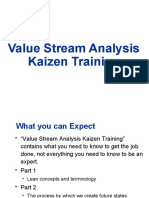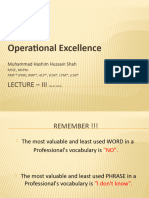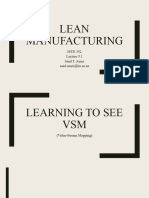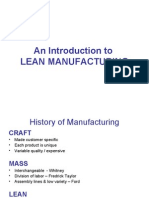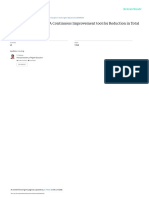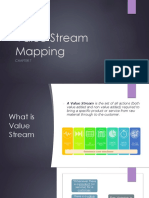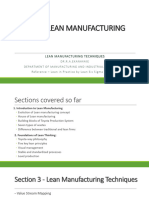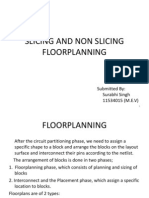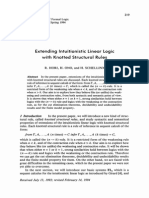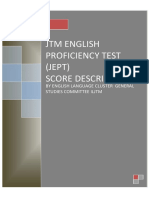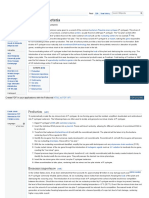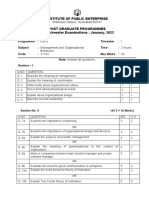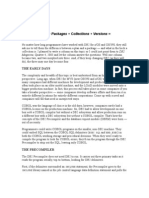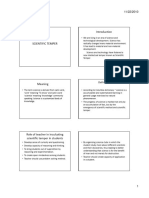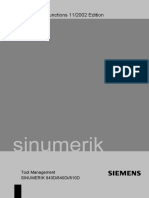Traditional Lean
1.
Customer Value:
Quality known per product or customer
Lead-time standard (problems covered over
with FG, Raw or WIP inventory)
Price economies of scale for both raw materials
& operations to gain price improvements
2. Identify/map the Value Stream:
Management of problem solving (A3, 6sigma, etc.)
TAKT std. for customer of type of product
Value Streams can be fixed long term
Process Mapping less importance (less leadtime & cost in info. flow)
Information flow: standard & repeatable
Lead time: mostly influenced by supply
chain & operations
High Mix Low Volume Lean
1.
Customer Value:
Quality (per part/project spec.)
Lead-time (OTD) entire value stream (Quote,
schedule, purchase, logistics, order fulfill, ship,
install/debug, invoice (cash flow))
Price - maintain & manage against quote
Profit better understood per project & customer
2. Identify/map the Value Stream:
Determine which problems deserve the
effort to root cause problem solve (ABC)
TAKT = planning/managing with quoted time
Value Stream: more flexible as
projects/customers change, only by type of
part/product (i.e. cross training matrix)
Process Mapping: more important to
improve lead-time (OTD) & cost for entire
value stream
Information flow: varies depending on
project type, customer, market
Lead time (value adding): influenced by
workload at every step of information &
material flow (less influence w/ supply chain)
3. Flow how to create flow across all processes: Value
Stream Management
Pacemaker heavier operations focus
(i.e. level every process to takt)
Lead-time (can be overcome with inventory)
SMED
OEE
use to balance each process to Takt
5S
Quality
3. Flow how to create flow: push order in & maint. flow
Bottlenecks:
Flow of information: real time manage
Flow of material: manage in real time (day
by hour, FIFO boards, etc.)
Lead-time competitive advantage
SMED
OEE
focus on bottlenecks, continuously
5S
realign capacity with demand
Quality
4. Pull work towards pull & no need forecast (is only a
solution when can not arrive at 1 piece flow)
Planning plan pacemaker (long CT),
manage inventory (Raw, WIP, FG)
Leveling small batch, JIT
Kanban where you can not reduce changeover, consider Supermarkets for Raw & WIP
4. Pull only a consideration based on ABC (runners,
repeaters, strangers analysis)
Planning launch based on agreed lead-time,
bottlenecks (capacity vs. demand) identified
by day by hour & FIFO boards
Leveling you are already JIT (only applies if
you have runners)
Kanban only applicable if ABC analysis
identifies runners, can use conWIP?, then
apply to raw & WIP (never FG for runners)
5. Perfection kaizen (continuous improvement)
Applies to specific products & standardizing
before next kaizen step
5. Perfection
Applies to general processes
Focus is bottleneck processes
Heavier focus on lead-time (no FG to hide
issues)
Bottlenecks in both flow of information & flow
of material (both have demand vs. capacity
issues)
Lean accounting (Activity Based Costing)
www.LowVolumeLean.com
�In High Mix / Low Volume
Lead-time is Dramatically Influenced Outside of Operations
High Mix Low Volume Lean
1.
Customer Value:
Quality (per part/project spec.), might need to
evolve understanding
Lead-time (OTD) entire value stream
(Quote, schedule, purchase, logistics, order
fulfill, ship, install/debug, invoice (cash flow))
Price - maintain & manage against quote,
profit varies more by product & customer,
therefore require a better understanding per
project & customer
Lead-time has less to do with operations
Order
Quot
ation
Technical
Resolution
Order
Raw
Mtl.
Supplier Lean Time
Plan
Order
Fulfill
Pack
Logistic
Invoi
ce
Operations is only a small portion of total lead-time,
Therefore Low Volume Lean specialized
methodologies focus both on the entire value stream
www.LowVolumeLean.com
�Takt time & the Pace-maker Principals are addressed
with
Quoted Times & Real-Time Bottleneck management
High Mix Low Volume Lean
2. Identify/map the Value Stream:
Determine which problems deserve the effort
to root cause problem solve (Intuitive, ABC,
etc.)
TAKT = planning/managing with quoted time
Value Stream: more flexible as
projects/customers change, only by type of
part/product (i.e. cross training matrix)
Process Mapping: more important to improve
lead-time (OTD) & cost for entire value stream
Information flow: varies depending on project
type, customer, market
Lead time (value adding): influenced by
workload at every step of information &
material flow (less influence w/ supply chain)
Time Available (per period)
Takt Time = Customer Demand (per period)
Difficult to determine, especially if you
Build to Order
VF-4 Schedule
Use your quoted times (your link to the
customer) & visually monitor planned to
actual time with day by hour
Pacemaker = Traditionally the
process with the longest cycle
time, its typically based on
standard products or product
families.
Instead
Identify and minimize the
impact of the
Bottle-neck in real time
www.LowVolumeLean.com
�These are a few simple
examples of how Lean being
applied to
differs from leans traditional
applications to
Scenarios
www.LowVolumeLean.com


